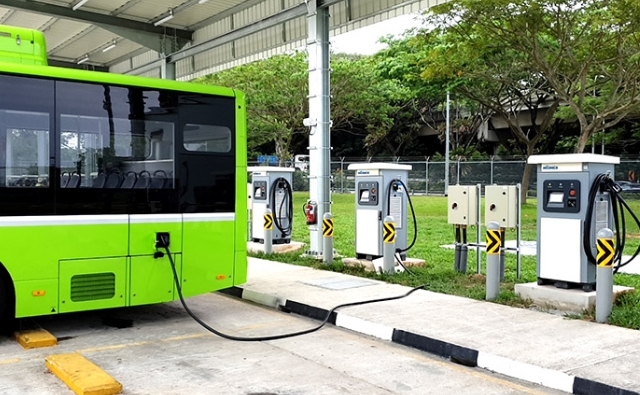By:
Superway - Feb 25 - 2025
The installation of DC charging piles involves many aspects, and factors such as safety, functionality, and ease of use need to be considered. The following are some common installation requirements and precautions:
Power supply and power demand
Power matching: DC charging piles require a large power supply, so before installation, it is necessary to confirm whether the power load in the area where the charging pile is located can meet its power requirements. For example, the power of fast-charging DC charging piles usually ranges from 150kW to 500kW, so it is necessary to ensure that the power grid can provide sufficient power.
Power supply support: Before installation, it is necessary to ensure that the supporting facilities of the power system, such as transformers, cables, and power access points, can withstand the high load of the charging pile.
Site selection and space requirements
Parking space: The space requirements for parking and charging new energy buses need to be considered. Especially for fast-charging and high-power charging piles, there needs to be enough space around the charging piles to allow vehicles to enter and exit smoothly and avoid obstacles during the charging process.
Flat ground: The charging pile should be installed in a place with a flat and solid ground to avoid affecting the stability of the charging pile due to uneven or soft ground.
Close to the power supply: The charging pile should be installed as close to the power access point as possible to avoid long-distance cable wiring, reduce power loss and installation costs.
Security Requirements
Electrical safety: DC charging piles involve high voltage current, so it is necessary to ensure that the electrical equipment complies with national and regional safety standards (such as the "Electrical Equipment Installation Engineering Construction Quality Acceptance Code"). Appropriate protective measures should be taken during installation, such as grounding protection, leakage protection, overload protection, etc.
Fire and explosion prevention: There should be no flammable and explosive materials around the charging pile. The installation location must comply with fire prevention requirements and ensure that fire prevention facilities and evacuation passages are complete.
Emergency stop device: During installation, it is necessary to ensure that the charging pile is equipped with an emergency stop device (emergency stop button) so that the power supply can be cut off in time when problems occur to ensure personnel safety.
Communication and monitoring system
Communication interface: DC charging piles are usually connected to a cloud platform or local management system, so make sure the communication interface and network connection are normal. Many charging piles also support remote monitoring, which can monitor charging status and fault alarm in real time.
Installation management system: During installation, relevant management software or hardware should be configured to facilitate operators to monitor, maintain and manage the status of charging piles.
Environmental conditions
Waterproof and dustproof: Charging piles are usually exposed to the outside, and the installation location needs to consider the impact of weather changes on the equipment. According to the protection level of the charging pile (such as IP65), the installation location should avoid long-term exposure to rain, dust or corrosive environments.
Temperature control: DC charging piles will generate a certain amount of heat when working, so a heat dissipation system needs to be installed to ensure that the equipment works within a reasonable temperature range. If it is installed outdoors, consider using a casing with good heat dissipation function and avoid direct sunlight.
Installation convenience and maintainability
Easy maintenance design: The installation of charging piles needs to take into account the convenience of long-term maintenance. Key components such as charging guns, display screens and buttons should be easy to operate and maintain.
Easy to detect: It is necessary to regularly test the electrical performance, communication status and stability of the charging process of the charging pile, so ensure that the equipment is easy to detect and inspect during design.
Regulations and Permits
Compliance certification: Before installing a charging pile, you need to ensure that the equipment complies with local regulations and standards. For example, China has relevant "Guidelines for the Construction and Management of Electric Vehicle Charging Facilities" and national standards (such as GB/T 18487) requiring that charging piles should have qualified electrical safety standards and comply with environmental regulations.
Local approval: Before installation, relevant construction and environmental approval permits should be applied to ensure that the installation process is legal and compliant.
Operation and management requirements
Billing system: If the charging pile is used for public services, you should consider installing a smart billing system. This will not only manage the charging costs, but also track the charging process, provide user data and charging history.
Multi-device management: If it is a place where multiple charging piles are running in parallel, it is recommended to install a charging pile management system for scheduling, monitoring and maintaining multiple devices.
Charging port and compatibility
Standardized interface: The interface of the DC charging pile should comply with industry standards to ensure compatibility with various new energy buses. For example, the charging interface that supports DC fast charging should be compatible with common charging standards (such as GB/T 20234, CCS2, etc.).
Equipment compatibility: During installation, the matching degree between the charging pile and the vehicle battery should be confirmed to avoid improper power matching.
The installation of DC charging piles requires comprehensive consideration of power, space, safety, environment, regulations, etc. In actual operation, it is necessary not only to ensure that the quality and technical specifications of the equipment itself meet the standards, but also to pay attention to the long-term needs of ease of use and maintenance management to ensure that the charging piles can operate stably, safely and efficiently.

Leave a Reply
Your email address will not be published. Required fields are marked *